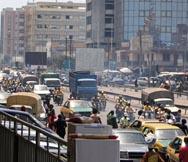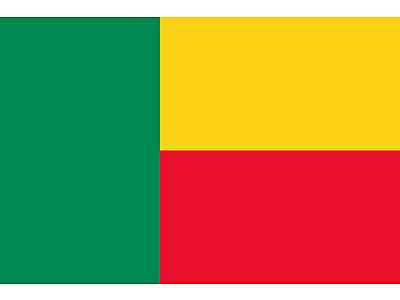Benin has emerged as a major transit point for goods destined for West African countries. Re-export trade in Benin consists in importing goods from all across the world and then export them to neighbouring countries especially Nigeria. Benin’s status as a distribution hub of the West African region goes back to the end of the 60’s during the Biafran war when goodsimported from the global markets were transported to Nigeria via Benin. However, in past few years, the dynamism of this trade has been greatly modified without necessarily reducing the volume of the traffic. A major portion of imports of textiles, second-hand clothings, second-hand cars and tyres is now being routed through Benin to meet the rising demand for these goods in Nigeria.
Benin’s re-export market is based on skirting the Nigerian protectionist policy and avoiding high import taxes. Many of the goods destined for Nigeria from Dubai or the Far East countries are consigned to import-export companies based in Cotonou, Benin. These import-export
 companies in Cotonou are registered with the Benin Chamber of Commerce and Industry, exchange operations are conducted by banks in Cotonou, goods pay the Beninese customs duties at arrival in the Cotonou port and sold on the Beninese territory in accordance to what had been declared to the Beninese customs.
companies in Cotonou are registered with the Benin Chamber of Commerce and Industry, exchange operations are conducted by banks in Cotonou, goods pay the Beninese customs duties at arrival in the Cotonou port and sold on the Beninese territory in accordance to what had been declared to the Beninese customs.
In reality, the goods are actually bought in Cotonou by Nigerian wholesaler who have exchanged money for the CFAF on the parallel market in Lagos, Cotonou or other border markets to pay for their purchases. These goods are then given to a group of transporters who transport them to the border where they are often stored in depots on the Beninese side before being smuggled into Nigeria.
Once in Nigeria, the goods are mostly taken to Lagos where they are stored, for further distribution to the local markets. This thriving trade route is popular amongst Nigerian businessmen as it simply means hiring the services of the Cotonou import-export company.
On the other hand, for Beninese operators, this re-export route is highly rewarding activity that generates easy income. It is estimated that this re-export route generated approximately 20 to 30 billion CFAF in customs revenue in 2007, representing more than a third of customs revenue and about 15 per cent of total budget revenues.
Continue Reading
The literacy rate in Benin is among the lowest in the world: in 2015 it was estimated to be 38.4% (49.9% for males and 27.3% for females).Benin has achieved universal primary education and half of the children (54%) were enrolled in secondary education in 2013, according to the UNESCO Institute for Statistics.
Although at one time the education system was not free,Benin has abolished school fees and is carrying out the recommendations of its 2007 Educational Forum.
The government has devoted more than 4% of GDP to education since 2009. In 2015, public expenditure on education (all levels) amounted to 4.4% of GDP, according to the UNESCO Institute for Statistics. Within this expenditure, Benin devoted quite a large share to tertiary education: 0.97% of GDP.
Between 2009 and 2011, the share of young people enrolled at university rose from 10% to 12% of the 18–25 year age cohort, one of the highest ratios in West Africa. Student enrollment in tertiary education more than doubled between 2006 and 2011 from 50,225 to 110,181. These statistics encompass not only bachelor's, master's and Ph.D. programmes but also students enrolled in non-degree post-secondary diplomas.
Continue Reading

 companies in Cotonou are registered with the Benin Chamber of Commerce and Industry, exchange operations are conducted by banks in Cotonou, goods pay the Beninese customs duties at arrival in the Cotonou port and sold on the Beninese territory in accordance to what had been declared to the Beninese customs.
companies in Cotonou are registered with the Benin Chamber of Commerce and Industry, exchange operations are conducted by banks in Cotonou, goods pay the Beninese customs duties at arrival in the Cotonou port and sold on the Beninese territory in accordance to what had been declared to the Beninese customs.
